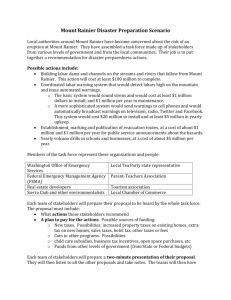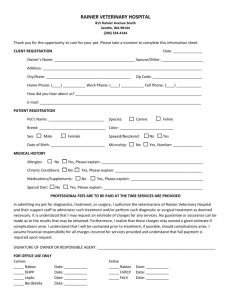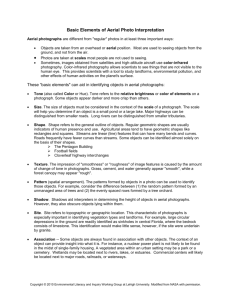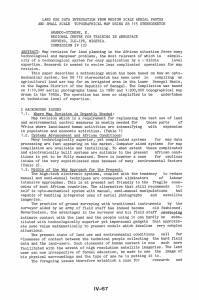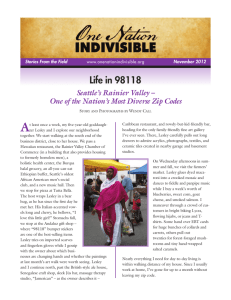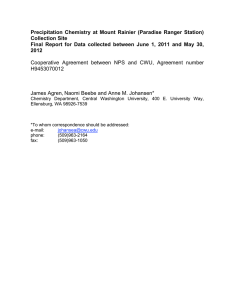Volcanic Landforms
advertisement
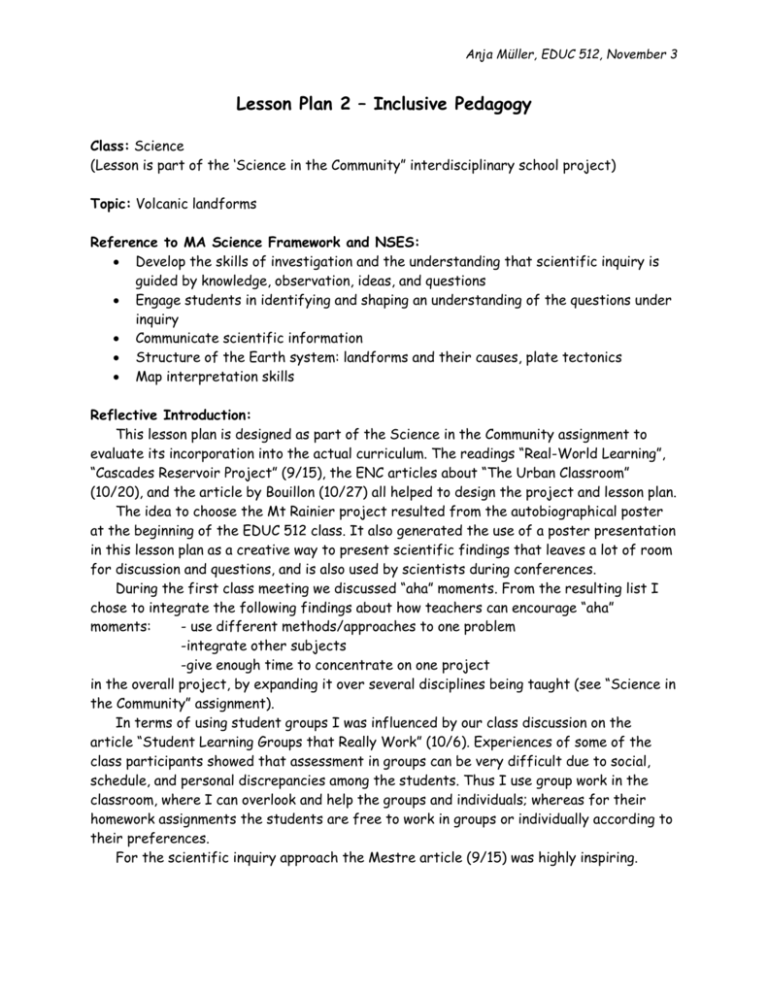
Anja Müller, EDUC 512, November 3 Lesson Plan 2 – Inclusive Pedagogy Class: Science (Lesson is part of the ‘Science in the Community” interdisciplinary school project) Topic: Volcanic landforms Reference to MA Science Framework and NSES: Develop the skills of investigation and the understanding that scientific inquiry is guided by knowledge, observation, ideas, and questions Engage students in identifying and shaping an understanding of the questions under inquiry Communicate scientific information Structure of the Earth system: landforms and their causes, plate tectonics Map interpretation skills Reflective Introduction: This lesson plan is designed as part of the Science in the Community assignment to evaluate its incorporation into the actual curriculum. The readings “Real-World Learning”, “Cascades Reservoir Project” (9/15), the ENC articles about “The Urban Classroom” (10/20), and the article by Bouillon (10/27) all helped to design the project and lesson plan. The idea to choose the Mt Rainier project resulted from the autobiographical poster at the beginning of the EDUC 512 class. It also generated the use of a poster presentation in this lesson plan as a creative way to present scientific findings that leaves a lot of room for discussion and questions, and is also used by scientists during conferences. During the first class meeting we discussed “aha” moments. From the resulting list I chose to integrate the following findings about how teachers can encourage “aha” moments: - use different methods/approaches to one problem -integrate other subjects -give enough time to concentrate on one project in the overall project, by expanding it over several disciplines being taught (see “Science in the Community” assignment). In terms of using student groups I was influenced by our class discussion on the article “Student Learning Groups that Really Work” (10/6). Experiences of some of the class participants showed that assessment in groups can be very difficult due to social, schedule, and personal discrepancies among the students. Thus I use group work in the classroom, where I can overlook and help the groups and individuals; whereas for their homework assignments the students are free to work in groups or individually according to their preferences. For the scientific inquiry approach the Mestre article (9/15) was highly inspiring. Anja Müller, EDUC 512, November 3 Learning Objectives: Learn how volcanic eruptions change topography Apply knowledge learnt thus far in the course (volcanism, interpretation of topographical maps and aerial photographs) Evaluate potential risk for people living in the vicinity of Mt Rainier Formulate next step in the ‘Science in the Community’ project Description of Lesson: Students share their group homework results on the 1980 Mt St Helens eruption (topics of the 5 groups: type of volcano, tectonic setting, May 18 events, change in topography, impact on local communities) in a poster session Students study aerial photographs and topographical maps of Mt Rainier and locate communities and valleys (as possible channels for lahars) Discuss advances in the ‘Science in the Community’ project in other classes and formulate next step Timing: Teacher Activity walks through the poster session, asks questions, takes notes, suggests further research, discusses Student Activity walk through the poster session, present their work, ask questions, discuss 10:15 – 10:25 explains exercise, objectives, hands out maps, helps with the task and interpretations, encourages discussions organize themselves into groups of three, use aerial photographs and topo-maps to locate and outline communities and valleys, discuss findings in their group 10:25 – 10:45 discuss group findings with class, discover relevance to students project 10:00 – 10:15 lead discussion to formulate next step decide upon homework: who is doing what next for the project (e.g. one group/individual calls the CVO, etc.) Homework: As decided upon by the students (teacher should assure equal distribution of tasks among the students. Anja Müller, EDUC 512, November 3 Lesson Evaluation: Posters answer the assigned questions/topics sufficiently and are well organized Students participate in the discussions and group work Students understand the objectives of the map exercise Students listen to and respect other’s ideas Students assign their own homework as the next step for the project Student Assessment: Quality of information, organization, and presentation of the posters Participation in discussions, group work New Targets: Mechanisms of lahar generations Case studies on other lahar producing eruptions to understand their extend Eruption history of Mt Rainier Special Needs: Make sure everybody understands the objectives of the in-class work and the project and participates equally (extra explanations, help by other students, use of different media (hand-out, picture, etc), formulation of questions on index cards, individual talk with the teacher if needed for students who need more time to understand contexts) Materials: Aerial photographs and topographical maps of Mt Rainier Safety Concerns: Group discussions
